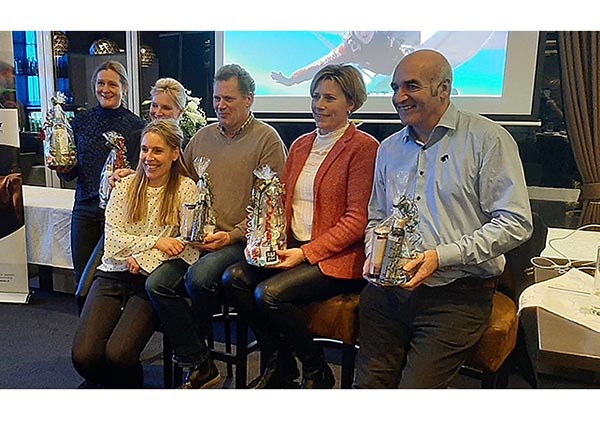
By Adriana van Tilburg
Breeding horses is more than researching pedigrees and dreaming about the product you want to create. There are many health and hygiene issues to also consider, such as whether the mare is fertile and has a clean uterus. Similarly, how fertile is the stallion? It’s understood that breeding is not easy, and Desiree Gebbink recently organized an Equine Reproduction symposium in the Netherlands.
There were four speakers: Leontine ter Harmsel, who demonstrated how to flush an embryo. She is a sport horse veterinarian who specializes in getting problem mares in foal as well as embryo transfer. Bart Kools has been responsible for the stallion station at Paul Schockemöhle’s Gestüt Lewitz for 20 years, accountable for all the coverings and the processing of semen at all his stations. Tullis Matson is the owner of Stallion AI Services in Great Britain, an expert in equine reproduction, but also a specialist in different fields of wildlife reproduction. Finally, Karin Hendriks specializes in problem mares, embryo transfer, and ICSI.
Q Why did you organized this symposium?
Desiree Gebbink: Last year I followed a class by Arno Lindner at Tierkliniek Lüsche. Many experts from our field were there, including Tullis Matson. I’ve known Tullis for 10 years, andlike to work with him as well as Bart Kools – two real practitioners in our field for equine semen processing, and that’s something you can’t learn out of books. Especially working with equine semen, you need to develop a feeling for understanding the process.
So we discussed that it might be a very good idea to organize an information evening on equine reproduction in Holland. There are many classes for veterinarians, but not for practitioners in the field and everyone who is interested in equine reproduction. To make the evening complete, Karin Hendriks was invited to talked about ICSI/OPU. Karin is well known in Holland, she is a real expert, a specialist in equine reproduction who worked for many years at Utrecht University.
Last year was the first time I organized this, and received feedback that people would like to see the work in practice, so this it was made possible thanks to Gerrit and Leontine ter Harmsel from Enterbrook. They offered the use of their fcility so we could organize the practical part, which resulted in flushing an embryo, and a very special foal will be born in December.
The purpose is to try and organize this symposium every year, especially at this time of the year. There is a lot of ignorance, mainly because techniques are changing through the years. My intention is to share knowledge from practitioners in the field and share experiences so that breeders can benefit and, more importantly, to learn from it. Every stud owner wants a stallion who is fertile, and every mare owner wants to produce a healthy foal. Everybody has the same goal! The best way is to organize a day that is accessible to everyone who is interested in equine reproduction, and share ideas. So, yes, next year I will try to organize again an equine reproduction symposium.
The practicum
The day was divided into two parts, the first being the praticum at the Enterbrook veterinary clinic where there is also a studfarm. Leontine ter Harmsel demonstrated how an embryo is flushed, while Tullis Matson and Bart Kools explained the do’s and don’ts of processing semen. The room at Enterbrook had a microscope linked to a large screen so it was possible to view the motility of the sperm. Kools and Matson also explained about the differences between semen motility and viability, as well as the different types of extender that can be used... To read the complete article you need to be a subscriber
CLICK HERE TO SUBSCRIBE TO BREEDING NEWS
SUBSCRIBERS CAN READ THE COMPLETE ARTICLE BY LOGGING IN AND RETURNING TO THIS PAGE



